What a beautiful illustration of Nadia – Secret of Blue Water by Yoshiyuki Sadamoto-san, who worked on the character design for this animated series. He was also the character designer for a whole bunch of other films like Evangelion, Summer Wars, The Girl Who Leapt Through Time, just to name a few.
A few illustrations of Nadia can be found in his art book Carmine. ( read review here. ) Another prominent artist who worked on Nadia was Tatsuyuki Tanaka-san; there are some select image boards of the film found in his art book Cannabis Works. ( read review here. )

I remember seeing Nadia on TV as a kid but I honestly can’t remember much of it except the opening sequence. (video link below) The blu-ray boxset is too exorbitantly priced but I look forward to owning it…some day.
The visual style of the opening is very typical of the anime series during the 80s/early 90s; and the quality of the 2D animation is very, very good. ( The varied run cycles of the group shot alone shows off the superb skill of the animator. ) 見るとどきどきしちゃうわ。
I really miss the good old days of these fluid, beautiful cell animation.
You might also be interested in these items :




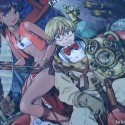 Nadia : The Secret of Blue Water 4KR Blu-ray
Nadia : The Secret of Blue Water 4KR Blu-ray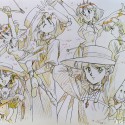 Return Of Nadia Genga Collection Art Book Review
Return Of Nadia Genga Collection Art Book Review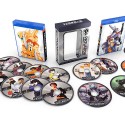 Patlabor Ultimate Blu-ray Boxset
Patlabor Ultimate Blu-ray Boxset Granblue Fantasy – The Animation Blu-ray Cover Collection
Granblue Fantasy – The Animation Blu-ray Cover Collection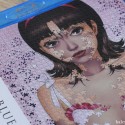 Perfect Blue – Japanese Edition Blu-ray ( Kon Satoshi )
Perfect Blue – Japanese Edition Blu-ray ( Kon Satoshi )


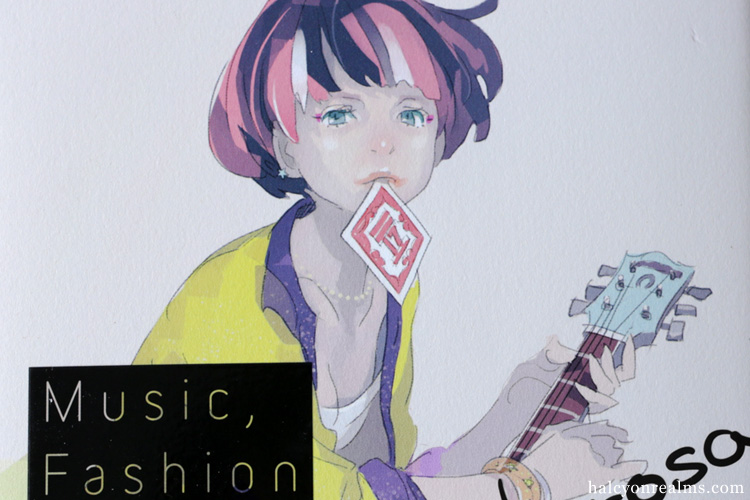
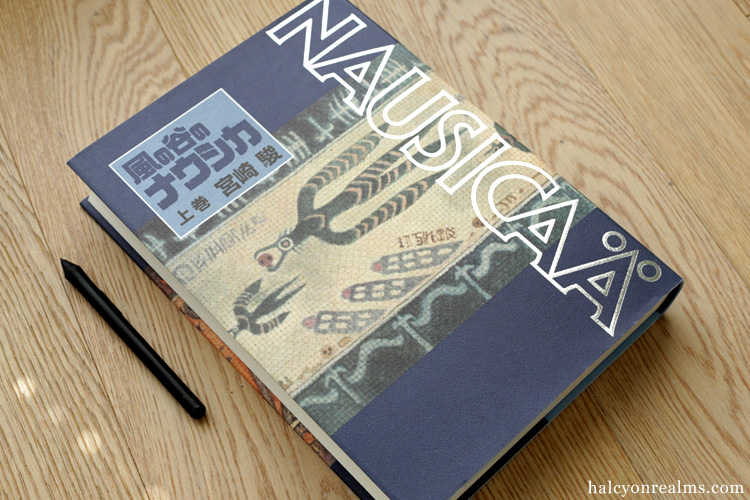


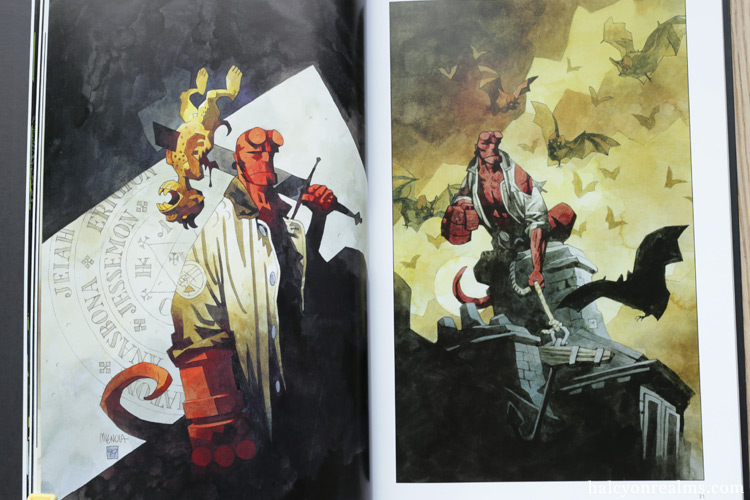
August 16th, 2012 at 10:17 am
“I really miss the good old days of these fluid, beautiful cell animation.”
What would you say is lacking with “modern” anime? Is there a specific problem? (Or “difference” to keep it diplomatic!)
I ask because for me personally, I can never put my finger on what it is. It’s a million little things that add up to modern anime not being as fluid and mesmerizing as the old days. (Of course I’m generalizing.) As a layman, I would be very interested in what you think is missing. Is it a money problem? Lower frame rates? Or simply stylistic differences?
August 17th, 2012 at 3:01 am
A lot of modern anime looks too hard and plastic, flat, with oversaturated color. Also digital space has no physical texture, unlike ink, paint, celluloid, and paper. You can see the characteristics of painted packgrounds in that Nadia video, along with more ‘natural’ looking color.
I also believe that the cels over backgrounds create depth that can be felt. It’s like comparing a digital rendering of a Van Eyck painting to the real thing (or similarly constructed forgery).
August 19th, 2012 at 2:46 am
Long-time reader, first time post.
I think “texture” is the right word. I’m not a big anime person, but I can’t get into much since “Trigun” and “Cowboy Bebop.” I don’t know if those are hand-painted; I saw them on VHS first, which provides its own…grain. I agree, in any event, that older shows–“Akira,” “Castle of Cagliostro,” “Evangelion,” and the original “Gundam” all look better, if only because of the grain of the paint.
Again, I don’t know enough, probably, about what I’m talking about, I only really wanted to concur with the thought that hand-painted cels were better.
August 19th, 2012 at 2:49 am
I would add that “Ghost in the Shell 2: Innocence” is a counter-example where–I assume it was all computer-rendered–the plastic flatness of the computer animated cels made sense, in terms of storytelling. If you’ve heard of Marshall McLuhan, then maybe you sort of get the idea of–not, in his words, the medium being the message, but the medium, certainly, matching the message.
But apparently most people don’t like that movie, so maybe I’m crazy. And again: I admit I don’t really know what I’m talking about.
August 19th, 2012 at 12:56 pm
King Raoh – You’ve made some very interesting and valid observations. I was wondering if you work in the animation industry too ?
Scott – I’m certainly no expert myself, when I was working in Sunrise some years back it was already in CGI and I’ve never had real production experience in traditional cell animation, although there were a still a couple of veteran cell animators in the studio working on bg/secondary characters.
As you mentioned I’m sure no single factor is at play but many, but I suspect budgetary issues is one of them. Anime probably doesn’t garner as big a viewership these days, and on top of the reduced budget part of has to go to 3D work as well. 2D animators are paid very little ( a travesty in my opinion, given the amazing skill-set they have ), and less and less talent is entering the industry because it’s really tough to survive. Would you believe me if I told you working about the same hours in Macdonalds (cover some midnight shift every day) would get me about twice as much money as a junior 2D animator ? It’s true; I’ve done the Math and comparison. :]
I don’t think lower frame rates are to blame, because a skilled animator can still animate on 3s and get very beautiful work. Take Iso Mitsuo’s amazing series Denno Coil. An animator’s feel and understanding of posing, timing and action is much more important than a high frame rate.
Stylistic differences ? I think that plays a part too, although I feel its more a paradigm shift in the Japanese society on the whole as well. The really great anime we used to see was created in a time when Japan was in boom, both economically and culturally during the 80s/90s.
It’s certainly not great news, but I doubt we’ll ever get to see many more genre bending/groundbreaking work like Akira, Mononoke Hime and Evangelion anymore.
August 19th, 2012 at 11:36 pm
If you are talking pure visuals alone, I think the recent anime film, Redline, reaches the levels of great animation in those movies you mentioned. There’s rumors it took 7 years of painstaking hand drawn animation to produce something of this level: http://www.youtube.com/watch?v=2t26m_Q6ENo&hd=1
It’s not got the best storyline in the world, but if you want something that just takes 2D animation to the extreme, the Bluray is quite cheap right now, it’s worth checking out.
August 20th, 2012 at 3:22 am
Some more things to consider:
Ink line vs. digital line.
I don’t know about anyone else, but most of the 80s and early 90s anime I saw were on VHS tape and television. Lower image quality = grain and faded color. The first time I saw Record of Lodoss War (my favorite anime) on DVD, it was jarring, and it lost a certain softness and realism, color wise. That Nadia clip has that VHS/TV quality.
Imo, handmade work of any kind always feels more organic and textured than its digital counter-part.
August 20th, 2012 at 4:57 am
well I have to say, Yonghow, even if you were not working as key-animator (gengaman) in the industry, I agree with everything you wrote.
A friend of me who was really passionate about working as key-animator just quit few weeks ago, unfortunately because he couldn’t earn a living out of it….the payment is really below the decent, so I can easily understand that.
But I also respect every animator who continues doing this. It’s really not easy.
Actually, saying that it was way better back then in the 80s/90s is not exactly true.
I agree, the anime produced in the 80s/90s are revolutionary and still can keep up
with todays animation productions. Obviously they couldn’t break the limit of 2D
animation after the early 2000’s anymore. Hiroyuki Okiura, Toshiyuki Inoue, Mitsuo Iso and many others have reached the highest stage as animators, and it is getting time that the new generation of animators raise even higher.
But anyway, it was always hard, even back then. Anime industry always had problems with budget/time and etc. but still they managed to produce “Akira”.
Akira and Ghost in the Shell and even Nadia are exceptions, a lot of crap was also produced back then but they were not popular nor succesful.
The major difference today to the 80s/90s is that even they were not many animes like Akira back then, Akira, GitS and such were the most successful one.
Today, the succesful anime, well the “money making anime” and the majority of the industry are all focused on small group of people (mainly young japanese adult) and they do whatever they can to make this small group of people spend as much money as possible on the merchandising of their animes.
That is “the” difference between the 80/90 and now, they have less money & support for an “Akira’ish” project.
They “can” produce an anime like Akira now, but it is very risky. The japanese society has changed, and so the anime industry. the risk to produce projects that are willing to break the limit or be different is just way too high now. They rather produce the less risky and casual project to keep the company alive.
New Animes like Masaaki Yuasa’s “Mind Game” still didn’t get the attention they deserve.
(Gladly, some few Studios still manage to produce good quality stuff like ” A letter to Momo”, Production I.G….but even I.G is forced to earn money so they make a crappy Mass Effect animation for the fan-base.)
Alex mentioned “Innocence”, I think it’s a great example that digital animation can also look good, honestly if the people have the time and budget, they
can make digital work, looking as good as the analog ones, the talents are there.
Another nice digital production I could mention would be the anime segment in Kill Bill Vol.1. Specially the last part, the “sniper scene”, just take a look at the detailed coloring on the cells/character etc., it was because of the talented Mitsuo Iso, he is not just an amazing animator, obviously he is a multi-talented artist in the industry.
Simple said, if there is “enough” money, enough time and if there is the support from both inside and outside/the audience, they could still produce amazing anime, no matter if digital or analog.
Sadly this happens only few times. Animatrix was also a production that had lots of support so they were able to produce some great quality shorts there (Kids Story, Beyond).
Shinichiro Watanabe himself said (reffering to Kids Story) that usually they are not able to produce such a high quality animation project, but since they had the money and time, they did it (probably because of Warner Bros.)
When the budget is low, the problems appear after another (in-betweens get done outside japan…korean in-between studios are ok though, but if you are unlucky they will ship them to china or somewhere else….as a key-animator, worst thing that could happen to your work would be to ship it to china for in-betweening. The overseas done in-betweens make the animation look really bad).
overseas done in-betweens are factory jobs, they don’t hire talented people for it,
the attitude for them is “just get it done in high-speed, doesn’t matter if it’s good or not”
But that’s not all, they also give them every single frames for the digital tracing process sometimes.
Usually, they digitally trace every single drawn frame for the final process and rendering.
And that’s why the lines look so unnatural and straight without any hand-drawn dynamics in them. (doesn’t matter if you are a digital animator or an analog one, they still trace your lines even if you draw them on a tablet and through that, the lines can lose their hand-drawn profile depending on who is tracing them)
Animes with good digital tracing are “Innocence” and “Animatrix” as example, where they tried to keep the traced digital lines accurate to the original rough lines done by the animator (or the animation supervisor who usually polishes stuff).
About the colors, don’t worry they are many talented compositors and people skilled in color gradings and digital ink&paint in the industry but few people who are interested to support these people. FLCL has a very nice coloring too in my opinion.
There are still many other issues but yea, simple said, budget and time, but the people and talents are still in the industry, sadly some of them are now forced to work on uninteresting projects to survive, but don’t worry guys, there are still anime productions in the animation level of the 80s/90s, they are just not so successful anymore.
(Redline had no success in Japan even if the animation was mind blowing)
But even so, I still think there is hope for the industry, there are people that are working hard to break the limits again. 2012 and 2013 have some quality stuff coming up.
Miyazaki is also working on something very very huge again.
I also wish the best for Satoshi Kons movie wich has hard time getting actually finished due budget, hopefully they will be able to finish his last masterpiece soon.
August 21st, 2012 at 11:25 pm
YOyoYO – Thanks for the great insight ! :] It’s always good to hear from someone within the industry.
Mind Game is quite simply mind blowing – it’s experimental in some ways but the quality of animation is unbelievable !
As you’ve mentioned there are quiet a few exciting projects coming up – Wolf Children, Letter To Momo ( both already screened in Japan ), Otomo’s Short Peace, Miyazaki-san’s new film, let’s hope they keep coming ! :]
August 22nd, 2012 at 4:33 am
Thanks all of you for the wonderful discussion.
Much food for contemplation.
Agreed wholeheartedly that any technical or monetary limitations can be overcome by people with true vision, skill and dedication.
And they are certainly out there toiling away as we speak.
It’s important to keep ours eyes peeled for these diamonds in the rough.
And to that end, thank you for the wonderful book reviews.
(Though, know that i curse your name over the steadily increasing size of my amazon.co.jp shopping cart!)
August 22nd, 2012 at 2:03 pm
Yeah, I really don’t think it has to do with being digital, I think it’s just there are a lot of people involved in making an animation and when not all of them are doing a good job (whether it’s because they’re not good at it or because they’re not given enough time, etc.) it shows. At the end when the credits roll, everyone listed needed to have done a good job.
There’s been a lot of good stuff too though. FLCL, Summer Wars. Gurren Lagan looked good too especially for a TV show.
Ultimately if you give talented people freedom and money they will make really good things for you.
August 24th, 2012 at 4:58 am
Analog’s lossy methods of reproduction can have pleasing effects on the original source material. Both LD and VHS had a tendency to blend colors, the effect could be quite pleasing at times. Of course both those formats and the standard def TVs they played on also were plagued with many problems and limitations which worked against presenting the work as the artists intended. And strangely enough, just as we leave analog behind, digital Hidef formats allow us to see works like Nadia as the creators seen them in the screening room of the studio–as “films” not yet downsized to standard def formats. That of course brings up the question, is it best to see these works in HD, considering they were produced to be shown in SD? Are we seeing more details, or just seeing more dirt the camera man didn’t think he had to worry about?
August 24th, 2012 at 4:29 pm
Here is another first-time commenter.
I’m not really an expert, and I may easily miss some of the subtleties in animation, but I would like to express a less pessimistic point of view.
It’s a shame, but I’ve really “discovered” japanese animation a few years ago, and I’ve been completely in love with it since then. Comparing with western animation, there are a couple of “miracles” about japanese animation that strike me:
– first: they haven’t given up 2d animation, and use 3d when they really need it, beautifully mixing the two techniques. But the unsurpassed beauty of 2d drawing is still there. (I sometimes fantasize that John Lasseter, who is a remarkable director, feels guilty for having virtually killed 2d animation in the US. That surely happened beyond his intentions);
– second: in japanese animation you can still find original, interesting and strong stories. 95% of western animations have basically this plot: “a boy/girl/pet feels discouraged and lacks self-confidence, but after some adventures, with the help from a friend, he makes some heroic action and gains self-assurance”. So boring…
So I was wondering: why all these comments about the decline of japanese animation? Which are the best works of art produced today everywhere? Can you find something that can compare with the best japanese animations? Probably not. So, there is probably no new Akira, but it’s not always necessary to “push the limit”, sometimes it’s good to use a mature technique for telling beautiful stories.
However it’s sad to read that animators are paid so little, this is going to have serious consequences in the future.
Sorry for the long comment.
PS Your blog is so interesting!